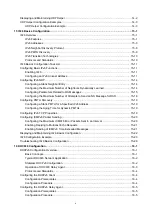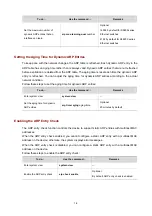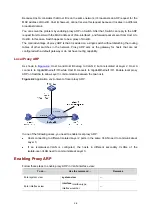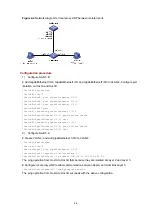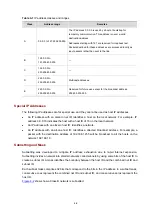
2-2
Because Host A considers that Host B is on the same network, it broadcasts an ARP request for the
MAC address of Host B. Host B, however, cannot receive this request because it locates in a different
broadcast domain.
You can solve the problem by enabling proxy ARP on Switch. After that, Switch can reply to the ARP
request from Host A with the MAC address of Vlan-interface1, and forward packets sent from Host A to
Host B. In this case, Switch appears to be a proxy of Host B.
The main advantage of proxy ARP is that it is added on a single switch without disturbing the routing
tables of other switches in the network. Proxy ARP acts as the gateway for hosts that are not
configured with a default gateway or do not have routing capability.
Local Proxy ARP
As shown in
, Host A and Host B belong to VLAN 2, but are isolated at Layer 2. Host A
connects to GigabitEthernet1/0/3 while Host B connects to GigabitEthernet1/0/1. Enable local proxy
ARP on SwitchA to allow Layer 3 communication between the two hosts.
Figure 2-2
Application environment of local proxy ARP
In one of the following cases, you need to enable local proxy ARP:
z
Hosts connecting to different isolated Layer 2 ports in the same VLAN need to communicate at
Layer 3.
z
If an isolate-user-VLAN is configured, the hosts in different secondary VLANs of the
isolate-user-VLAN need to communicate at Layer 3.
Enabling Proxy ARP
Follow these steps to enable proxy ARP in VLAN interface view:
To do…
Use the command…
Remarks
Enter system view
system-view
—
Enter interface view
interface interface-type
interface-number
—


